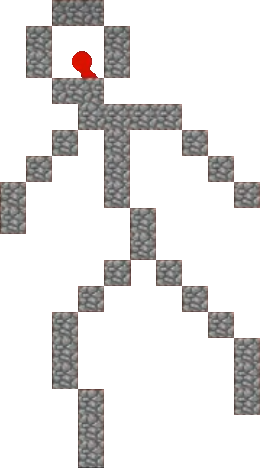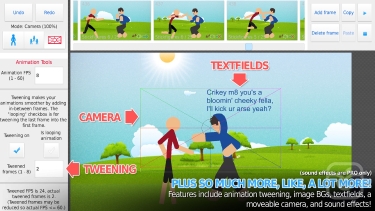

The first international use of stick figures is in the 1964 Summer Olympics in Tokyo.

There is also a modern history that traces at least in part from Rudolf Modley’s extending the use of figures from Isotype for commercial use. The Italian animated TV series La Linea depicts a figure outlined by lines, so it is not a real stick figure. Stick figure animation software includes Pivot Stickfigure Animator. Animations can be exported in various formats and shared online. Many other stick figure animation suites exist, which allow the user to create an animation frame-by-frame, or by extrapolating the intermediate frames between a start and endpoint. Some online cartoon series, such as Xiao Xiao, have been made using the software. Such figures are easy to draw and can be traditionally animated much more quickly than full drawings. Stick figures are often used in animations made with Adobe Flash. They are also found in the literature, with for example an adventure by Sherlock Holmes, called Les Hommes dansants, based on a code representing match sticks, but also in video games, with Xiao Xiao and especially in comics, especially with the webcomics. The symbols are understandable for everyone, thus avoiding having to translate every piece of information into the most used languages. Match sticks are used in signage, especially with symbols created by the American Institute of Graphic Arts (AIGA), for their universality.

In order to remove this ambiguity, draftsmen use conventions, such as eyebrows pointing down to show anger, wide-eyed for fear, or gaping mouth for surprise. The use of a minimum of detail allows a light style and a quick drawing, but also causes an ambiguity in the expression of the emotions. logographies such as Egyptian and Chinese-started simplifying people and other objects to be used as linguistic symbols. Tens of thousands of years later, writing systems that use images for words or morphemes-e.g. The stick figure’s earliest roots are in prehistoric art. Stick figures are often used in sketches for film storyboarding. Graffiti of stick figures are found throughout history, often scratched with a sharp object on hard surfaces such as stone or concrete walls. Details such as hands, feet and a neck may be present or absent, and the simpler stick figures often display an ambiguous emotional expression or disproportionate limbs. The arms, legs and torso are usually represented by straight lines. In a stick figure, the head is represented by a circle, sometimes embellished with details such as eyes, mouth or crudely scratched-out hair. A stick figure is a very simple drawing of a person or animal, composed of a few lines, curves, and dots.


 0 kommentar(er)
0 kommentar(er)
